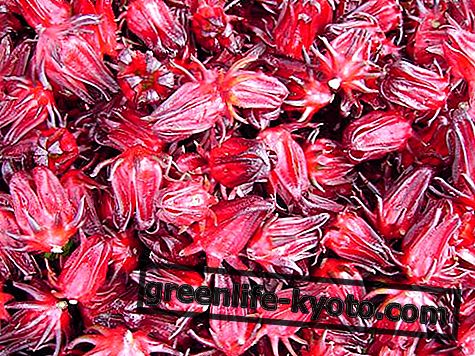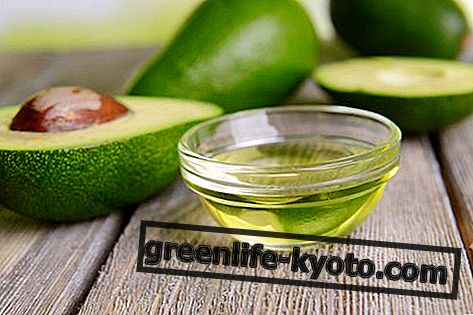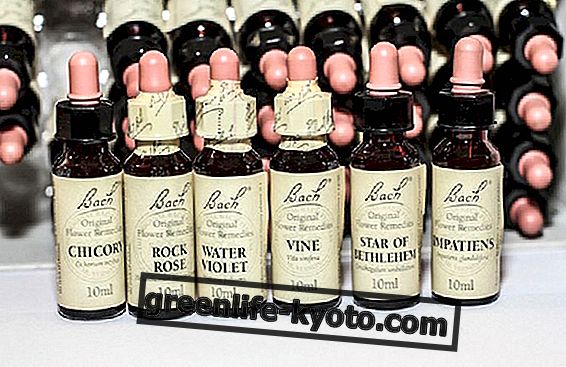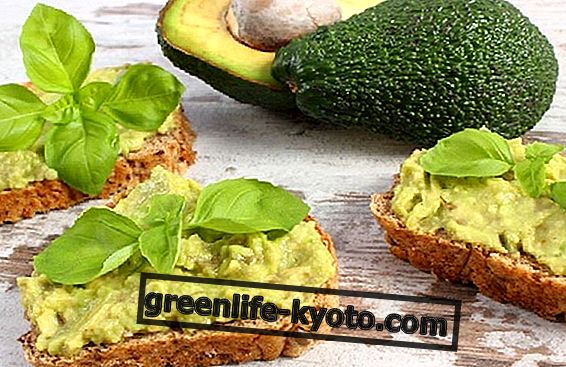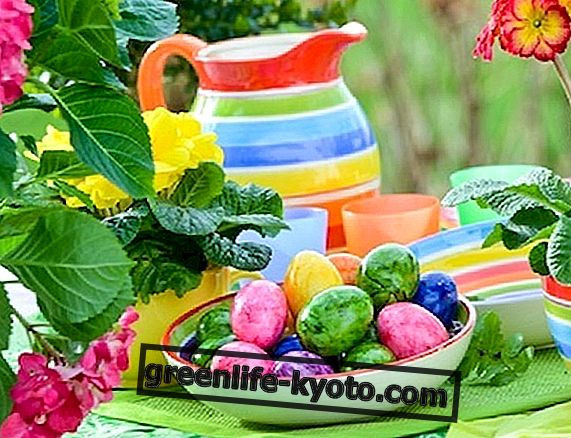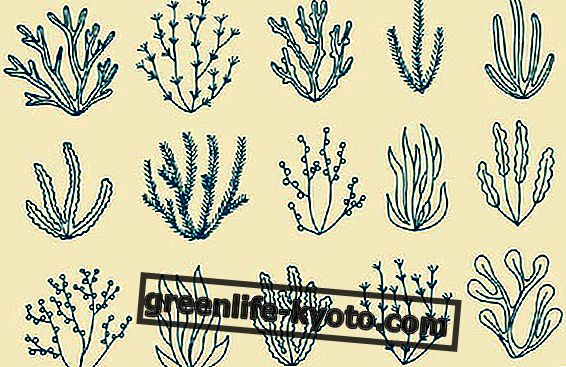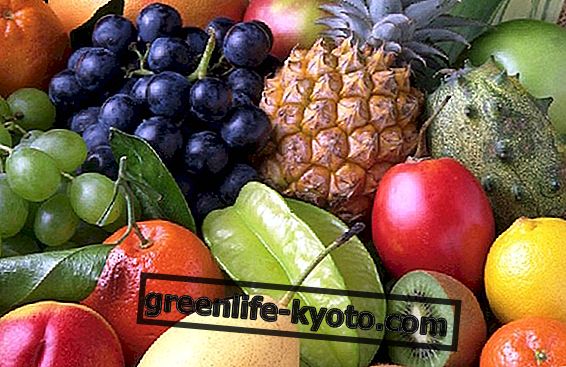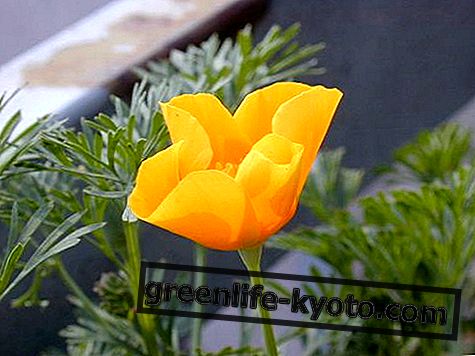Peach is a fruit rich in vitamin C with refreshing, refreshing, diuretic and slightly laxative properties. Let's find out better.
>

Plant description and variety
Its scientific name is Prunus persica and for 5000 years it has been cultivated in China, being considered a symbol of long life and immortality. It is a tree that can reach a height of five meters, resistant to temperatures of - 18 ° and beyond 40 ° C. In Italy, depending on the area and the variety, they are harvested from May to September.
There are mainly three types of peaches :
- the common peach with yellow or white flesh with a thin and velvety skin on the surface,
- nectarine or walnut peach with a firm consistency and a smooth skin
- the percoche that are distinguished by the most consistent pulp, appreciated by the food preserving industry for their long lasting durability.
In addition, peaches have been selected over time in a wide variety of types depending on the environment, to better adapt to the climate in which they grow. They are also distinguished according to the ease of the pulp to detach from the hazelnut (called spiccagnole) and those that remain adherent (called duracine).
A peach currently returned in high consumption is the saturnina, cultivated mainly in Sicily, its name makes us guess the crushed shape like the rings of the planet Saturn and shows itself with white pulp and red veins, very tasty and fragrant.
Properties and benefits of fishing
Peach is rich in water up to 90% and therefore is used as a refreshing, thirst-quenching and even has diuretic and slightly laxative properties useful for constipation, kidney stones and cellulite.
This fruit is nutritious and rich in beneficial substances, but still having a low calorific value is used in slimming diets. Peach contains mineral salts in quantity, first of all potassium (250 mg), then phosphorus, calcium, magnesium and even iron. All these salts are excellent in the summer due to the natural increase of sweating and the consequent loss of the same; in particular the potassium besides being a tonic is a tonic that helps the functionality of the nervous system and of the heart beat.
An important element present is iodine, especially in white-paste ones; iodine helps the thyroid function and is therefore indicated for hypothyroidism. It allows a greater production of thyroid hormones that accelerate the functioning of all the apparatuses, including the liver, so that white peach is used precisely in clinical cases in which a drainage and support to this organ is needed.
Among the vitamins, it is rich in vitamin C until it covers, with just one peach, the daily requirement of 15%. Vitamin C is useful for strengthening the immune system, fortifying bones and also together with the presence of iron that we find in fishing, we have a synergy conveyed by vitamin C to improve the absorption of this precious mineral.
Peaches contain the precursor of vitamin A (called beta-carotene) which in our body is consequently transformed into vitamin A and performs multiple functions against pollutants, purifies and helps bones, teeth and skin. Vitamins A and C are also powerful antioxidants to fight free radicals. It still contains vitamins B, K and E which complete the picture with their restorative and mineralizing properties. The only warning for the consumption of peaches concerns the diets for diabetics (due to the richness of sugars) which exclude the yellow paste type being richer in sugars.
Calories and nutritional values of fishing
100 g of peaches contain 25 kcal / 103 kj.
Furthermore, for 100 g of product we have:
- Available carbohydrates 5, 80g
- Sugars 5, 80g
- Protein 0, 70g
- Fat traces
- Cholesterol 0g
- Total fiber 1, 90g
- Soluble fiber 0.78g
- Insoluble fiber 1, 14g
Peaches, allies of
Weight, immune system, bones, teeth, skin, heart.
Curiosity about fishing
- Peaches contain the very hard kernel in which the seed is enclosed. This seed is rich in a toxic substance, similar to cyanide, that the plant produces to prevent it from being eaten by animals to guarantee descent.
- These fruits are easily digestible even if the advice remains, as for all fruit, to be consumed away from meals to avoid fermentation and swelling.
- Some people are allergic to peach hair and therefore can't get close to them or eat them.
- A good news to those suffering from headache comes from a study that reports a therapeutic effect given by the use of white peach; in fact, thanks to the hepatic drainage and the increase in diuresis, it is able to decongest the painful cerebral microcirculation reducing the headache.
A recipe with peaches
How can we use peaches? Obviously fresh for a juicy snack, in fruit salads or alone. While outside the harvest season instead of buying peaches from distant countries we can prepare them and store them for the cold season. They can be boiled and put under glass with syrup (peaches in syrup), prepared in jams, juices and ice creams, and finally dehydrated and dried for cakes and special dishes for the holidays.
Preparation of peaches in syrup: take as many peaches as we want to put away under glass. It is necessary to use spiccagnole ones, that is to say that the stone detaches itself from the pulp, since the preparation of cutting them into pieces or quarters is facilitated. They wash pots with a capacity of 0.5 or 1 kg and are sterilized. One way is to pass the open jars in the oven at 180 ° for 10 minutes with even the caps that must be the ones suitable for heat resistant jams.
Once cooled, cut the peaches, cut into pieces and pressed well, trying to fill the spaces as much as possible. Once you reach the top of the pot, pour a few tablespoons of brown sugar or malt or other natural sweetener (Stevia) and close the lid well. Dip the jars in a pan full of water and boil for at least 40 minutes.
Take the still hot pots and put them upside down so that they form the vacuum. With this preparation the peaches can be kept for more than a year.

